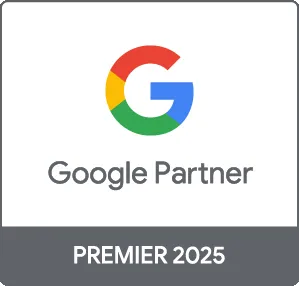Google Ads can be a powerful tool for marketing agencies looking to enhance their service offerings and drive client success. With the right strategies in place, agencies can harness the full potential of Google Ads to attract leads, increase brand awareness, and maximize return on investment (ROI). In this article, we will explore key strategies, tips, and best practices for implementing Google Ads effectively within a marketing agency's portfolio.
Why Google Ads Matter for Marketing Agencies
In today's digital landscape, Google Ads offers marketing agencies a unique opportunity to reach targeted audiences and generate leads. Here are some reasons why leveraging Google Ads is crucial:
- Immediate Visibility: Unlike organic SEO strategies that may take time to achieve results, Google Ads provides instant visibility on search engine results pages.
- Targeted Advertising: Google Ads allows agencies to target specific demographics, interests, and geographic locations, ensuring that their ads reach the right audience.
- Measurable Results: With detailed analytics and reporting features, agencies can measure the effectiveness of their ads and optimize strategies to improve performance over time.
1. Crafting Compelling Ad Copy
The success of Google Ads heavily relies on the quality of ad copy. Here are some tips for writing effective ads:
- Use Clear and Concise Language: Clearly communicate the value proposition in a way that resonates with potential clients.
- Incorporate Strong Calls-to-Action: Encourage users to take action with compelling CTAs like “Contact Us Today” or “Get Your Free Consultation.”
- Highlight Unique Selling Points: Differentiate your agency by showcasing what sets you apart, whether it’s expertise in a niche market or specialized services.
2. Keyword Research and Targeting
Effective Google Ads campaigns begin with thorough keyword research. Consider the following strategies:
- Identify Relevant Keywords: Utilize tools like Google Keyword Planner to discover high-traffic keywords that align with your services.
- Use Long-Tail Keywords: Targeting long-tail keywords can help you connect with clients who are further along in the buying process.
- Analyze Competitors: Monitor competitors’ keywords to identify gaps and opportunities in your own strategy.
3. A/B Testing for Optimization
A/B testing is essential for optimizing Google Ads campaigns. Here’s how to effectively conduct A/B tests:
- Test Different Elements: Experiment with different headlines, ad copy, calls-to-action, and images to see what resonates best with your audience.
- Measure Results: Track key performance indicators (KPIs) such as click-through rates (CTR) and conversion rates to determine the winner.
- Iterate and Improve: Use the insights gained from A/B testing to refine ongoing ad campaigns and improve overall performance.
4. Tracking and Analytics
Finally, effective tracking and analytics are crucial for measuring the success of Google Ads campaigns. Here are some best practices:
- Set Up Conversion Tracking: Implement conversion tracking to measure the actions taken by users after clicking on your ads.
- Utilize Google Analytics: Gain deeper insights into user behavior and campaign performance by linking Google Ads with Google Analytics.
- Regularly Review Performance: Conduct routine performance reviews to adjust strategies based on what’s working and what isn’t.
Conclusion
Google Ads has the potential to drive significant results for marketing agencies, enabling them to generate leads and nurture client relationships effectively. By focusing on compelling ad copy, targeted keywords, A/B testing, and robust tracking, agencies can maximize the benefits of Google Ads. If you’re looking to enhance your clients’ campaigns or need assistance with Google Ads management, Prebo Digital is here to help you succeed. Contact us today for expert guidance!





